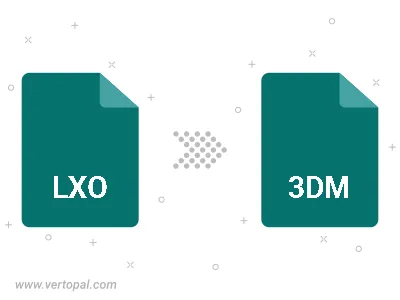Convert LXO to 3DM
Convert LXO 3D models to 3DM format, edit and optimize 3D models online and free.

The LXO file extension represents Modo 3D Image files, used in Foundry Modo, a professional 3D modeling, animation, and rendering software. LXO files store 3D scenes, enabling high-resolution image rendering and animation across single or networked systems. Originally developed by Luxology, Modo later merged with Foundry, enhancing its capabilities for video games, film, photography, and advertising.
The 3DM file extension, standing for "3D Model", is associated with the openNURBS initiative, which facilitates the exchange of 3D geometry across CAD, CAM, CAE, and computer graphics software. Developed by Robert McNeel & Associates, it serves as the native format for Rhinoceros (Rhino) software. Introduced to address interoperability challenges, 3DM files store precise 3D models using NURBS (Non-Uniform Rational B-Splines) and polygon mesh representations. This format is widely adopted due to its open-source nature, enabling developers to read and write 3DM files without proprietary restrictions, thus promoting seamless data sharing in 3D modeling workflows.
Start uploading a LXO 3D model by clicking the Choose File button or drag & dropping your LXO file.
Use any available LXO to 3DM tools on the preview page and click Convert.
When the conversion status changes to successful, click on the Download button to get the final 3DM 3D model.

To change LXO format to 3DM, upload your LXO file to proceed to the preview page. Use any available tools if you want to edit and manipulate your LXO file. Click on the convert button and wait for the convert to complete. Download the converted 3DM file afterward.
Follow steps below if you have installed Vertopal CLI on your macOS system.
cd to LXO file location or include path to your input file.Follow steps below if you have installed Vertopal CLI on your Windows system.
cd to LXO file location or include path to your input file.Follow steps below if you have installed Vertopal CLI on your Linux system.
cd to LXO file location or include path to your input file.